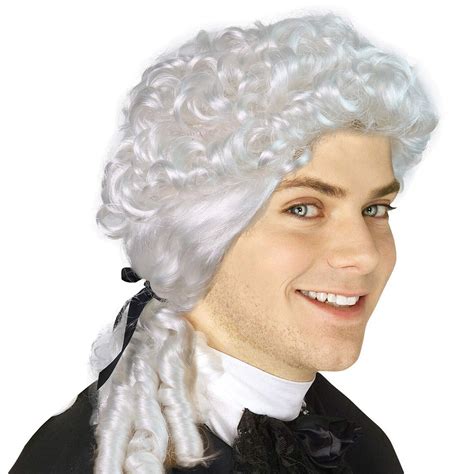Introduction
Classical powdered wigs, a symbol of elegance and sophistication, have graced the heads of royalty, nobility, and the elite for centuries. Their intricate designs and voluminous silhouettes have captivated fashion enthusiasts and historians alike. This article will explore the fascinating history, craftsmanship, and enduring legacy of these iconic wigs.

History
The origins of powdered wigs can be traced back to the 16th century, when French courtiers sought to imitate the flaxen hair of their king, Louis XIII. As the style gained popularity, the use of flour, starch, and other substances to powder and stiffen the hair became common. By the 17th century, elaborate wigs had become an essential part of formal attire for both men and women.
Wig Making Process
Creating a classical powdered wig is a highly skilled and time-consuming process. Using natural human hair, wig makers carefully construct the base or foundation of the wig. The hair is then tied onto the base in rows, creating a dense and voluminous structure.
The next step involves bleaching and powdering the wig. The hair is first bleached to remove its natural color and create a uniform white or cream base. Powder, often made from starch or rice flour, is then applied to the wig to give it its characteristic pale color and texture.
Styles and Variations
Classical powdered wigs come in a wide variety of styles and variations, each with its own unique characteristics. Some of the most popular include:
- Full Bottom: A large and elaborate wig that covers the entire head.
- Half Bottom: A smaller wig that covers the back and sides of the head.
- Bob: A shorter wig with a rounded or straight cut.
- Ramillie: A wig with two long, flowing curls on each side of the face.
- Steinkirk: A military-style wig with a long, folded piece of fabric at the back.
Social Significance
Powdered wigs were not merely fashion accessories. They played a significant role in social and cultural life. They denoted social status, wealth, and refinement. Wearing a powdered wig was a sign of respect and adherence to societal norms.
Decline and Revival
The popularity of powdered wigs declined during the late 18th century as the French Revolution ushered in new political and social ideologies. However, the wig made a brief revival in the Victorian era, becoming a symbol of nostalgia and romance.
Modern Applications
Today, classical powdered wigs are primarily used in historical reenactments, theatrical productions, and on special occasions. However, their influence can be seen in the fashion industry, where they inspire hairstyles, accessories, and even clothing designs.
Interesting Statistics
- In the 18th century, wig makers in London produced over 100,000 wigs per year.
- The average cost of a high-quality powdered wig during that time was between £1 and £5 (equivalent to £100-£500 today).
- The Parisian wig maker Léonard Autié, known as the “King of Wig Makers,” created over 1,500 wigs during his lifetime.
Common Mistakes to Avoid
- Using too much powder, which can make the wig stiff and unnatural.
- Not bleaching the hair before applying powder, which can result in uneven or yellowing.
- Choosing a wig that is too small or too large for the wearer’s head.
- Styling the wig incorrectly, which can damage the hair or alter its shape.
Conclusion
Classical powdered wigs are a testament to the enduring power of fashion and craftsmanship. Their intricate designs, voluminous silhouettes, and social significance continue to captivate people to this day. Whether in historical reenactments, theatrical productions, or on special occasions, these iconic wigs transport us to a bygone era of elegance and sophistication.
